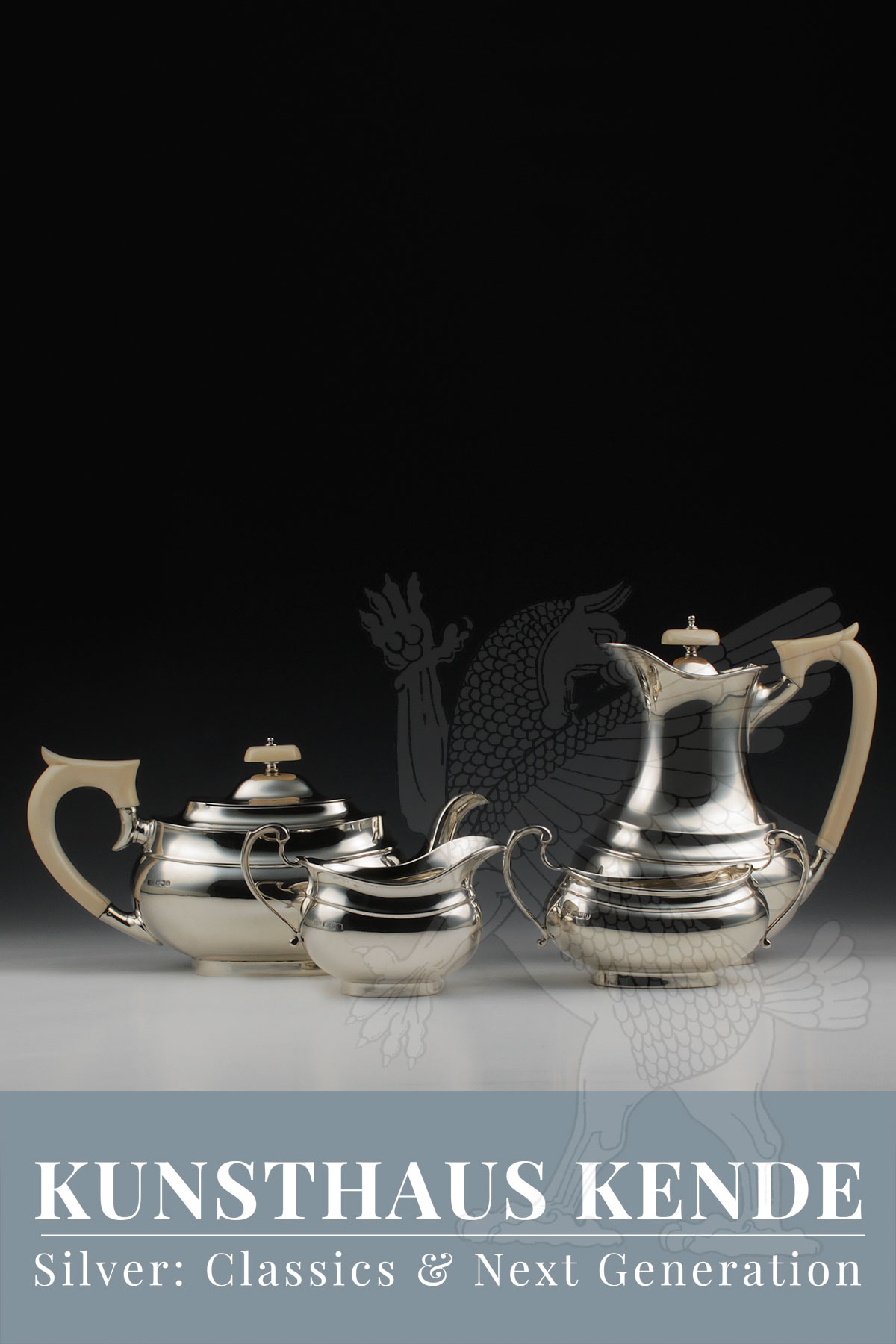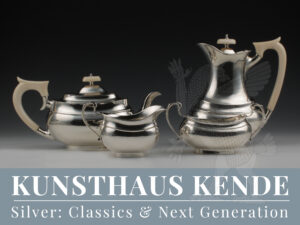Item number: 59020
An Art Déco sterling silver coffee and tea service,
Sheffield 1936 by Emile Viner
The pieces of this sterling silver four piece tea and coffee service have a globular form, the planished finish without engraved ornamentation. Each standing onto a flat base. The teapot and coffee pot are fitted with hinged covers, which retain the original oval finials in ivory and plain ivory C scroll handles.
A fine and substantial Art Déco work whose formal language anticipates the 1950s. Excellent condition of all parts without monogram. The coffee pot dated for 1936, teapot, milk jug and sugar bowl for 1937.
The very attractive price is due to the change in our product portfolio.
Teapot:
25.9 cm / 10.19″ length, 12.4 cm / 4.88“ width, 13.4 cm / 5.27“ tall; 677,1 g / 21.76 oz
1.05 ltr. capacity
Coffeepot:
18 cm / 7.08″ length, 11.2 cm / 4.40“ width, 20 cm / 7.87“ tall; circa 702 g / 22.56 oz
0.98 ltr. capacity
Milk jug:
14 cm / 5.51″ length; 202.0 g / 6.49 oz
Sugar bowl:
16.9 cm / 6.65“ length; 242.6 g / 7.79 oz
The Edward Viner Silver Factory
The origins of the Viner’s silver factory in Sheffield date back to 1908. Emile Viner, together with his brother Adolf, managed Viners Ltd (the spelling became established in the following years), one of the largest manufacturers of cutlery and silverware in England. However, the company did not limit itself to the manufacture of silverware, but also produced objects in pewter. Initially based in Broomhall Street, Sheffield, larger premises were soon required and production was moved to Bath Street in 1912. The company’s success also derived from its adaptability: during the First World War, for example, Viners Ltd produced mainly helmets and other war-related material, and production of silver was somewhat reduced. As Jewish immigrants, Adolf and Emile changed their name from Viener to Viner in November 1925. In 1930, George V granted the silver factory the privilege of being a supplier and silversmith to the English court.
In 1932 there was a generational change in management and the silver hallmark of Viners Ltd was registered for the son and nephew Edward Viner. In 1957, Gerald Benney, one of the most important British designers of the post-war period, was appointed head of the design department. In the 1960s and 70s, David Queensbury and Stuart Devlin created successful designs for Viners. In 2014, Viners Ltd was bought by the Rayware Group, for whom it still produces mainly cutlery.



![[:en]Greif Kunsthaus Kende[:]](https://kunsthaus-kende.de/wp-content/uploads/greif_kunsthaus-kende-238x300.png)

